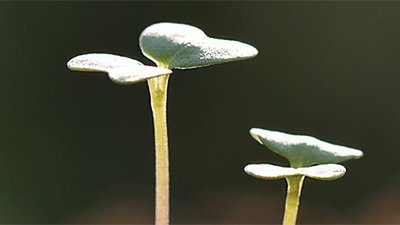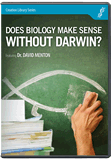
Researchers Push Convergent Evolution Theory with Similar Plant Groups
National Science Foundation: “When Plants ‘Think’ Alike” It’s another tall tale of “convergent evolution”: two separate plant groups that evolved the same critical building block.
Publishing in Proceedings of the National Academy of Sciences, Purdue researchers describe how they studied the genome of Selaginella moellendorffii (commonly sold as an ornamental moss). Purdue University researchers discovered that Selaginella plants include a substance called syringyl lignin, a critical part of the plants’ scaffolding and water-transport systems. Purdue colleague Jody Banks (who was not involved in the study) referred to syringyl lignin as an “evolutionary innovation.” Nothing surprising so far, right?
Angiosperms (flowering plants) also contain syringyl lignin.
However, angiosperms (flowering plants) also contain syringyl lignin—and here’s where things get sticky for evolutionists. Angiosperms are said to have evolved from gymnosperms—conifers, gingkos, and related plants—which supposedly split apart from the moss’s ancestor, lycophytes, long ago. Thus, the researchers were forced to conclude that the syringyl lignin evolved separately—“yet almost identically”—in lycophytes and (much later) in angiosperms.
“It apparently emerged separately in the two plant groups, much like flight arose separately in both bats and birds,” explains the news release from the National Science Foundation, which funded the research.
As with item #3 above, this is a perfect example of evolutionary dogma forcing evolutionists to jump to strange conclusions. Previous studies have already established, within evolutionary theory, that lycophytes and angiosperms are on different branches (pardon the pun) of plant evolution. Since gymnosperms lack syringyl lignin, the lignin had to have evolved separately—the only other conclusion would be that the entire understanding of plant evolution is wrong!
The incredibility of evolution is stretched more each time a biological feature or function, in all its complexity, is said to have evolved multiple times (such as bird and bat flight). When scientists have such little evidence—if any—of features evolving once, how much less likely is it that the same function evolved twice? Does simply stating that something highly improbable occurred in one scenario really make it more plausible that it has occurred elsewhere? It takes more faith to believe such a story, since there’s no supporting evidence, versus believing that an intelligent Creator made plants exactly the way He wanted them to be.
For more information:
Remember, if you see a news story that might merit some attention, let us know about it! (Note: if the story originates from the Associated Press, Fox News, MSNBC, the New York Times, or another major national media outlet, we will most likely have already heard about it.) And thanks to all of our readers who have submitted great news tips to us.
(Please note that links will take you directly to the source. Answers in Genesis is not responsible for content on the websites to which we refer. For more information, please see our Privacy Policy.)
Recommended Resources

Answers in Genesis is an apologetics ministry, dedicated to helping Christians defend their faith and proclaim the good news of Jesus Christ.
- Customer Service 800.778.3390
- © 2024 Answers in Genesis






